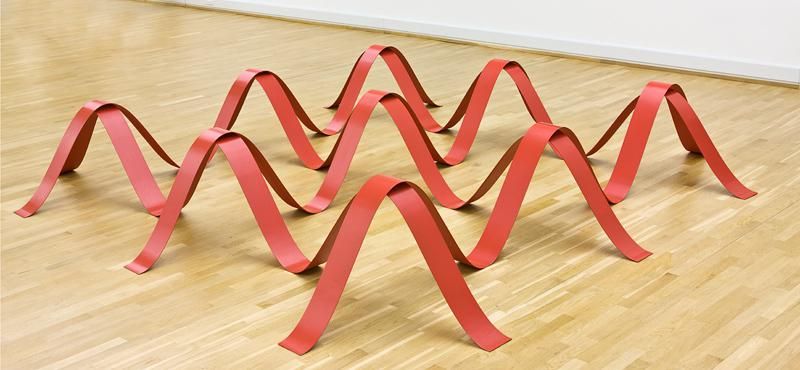
Red Sine Curve
In Heinsen’s Red Sine Curve, rows of red-painted metal bands cross each other, their bends echoing the mathematical-geometric strictness of the sine curve. By using an industrially manufactured material, subsequently spray-painted, and letting the shape be determined by a scientifically defined curve, Heinsen directs our attention away from the artist as a creator in the traditional sense. The result is the appearance that outer factors determine what the work looks like, not the artist’s subjectivity or psyche.
A sculpture with no content
The sculpture hides nothing; it is what it is. It places its inside and outside in plain view; nothing is encapsulated, neither its mass, content, or meaning. Whereas traditional sculpture has a finite outline and body and refers to something outside of itself, a context or meaning, Heinsen’s sculpture has no content. It could, in principle, continue indefinitely.
The development of Danish sculpture
The open, unfinished quality is precisely what interested Hein Heinsen. A significant shift in outlook took place within Danish sculpture in the late 1960s and the early 1970s. In the decade leading up to this change, artists looked to the aesthetics of French art, but gradually younger sculptors such as Hein Heinsen turned their attention to contemporary American minimalism.
1967-1992
Coated iron
KMS7607
Image © Hein Heinsen Text © National Gallery of Denmark, 2018
Where you'll find this

Permanent collection